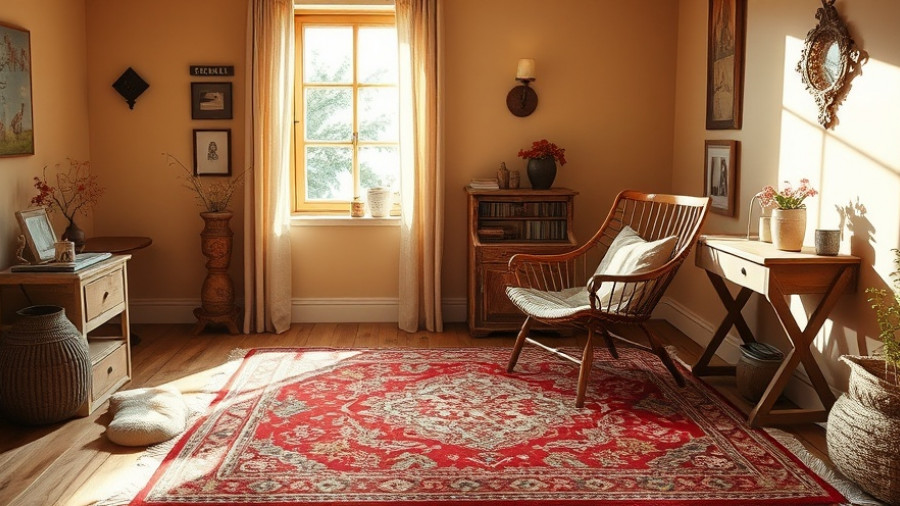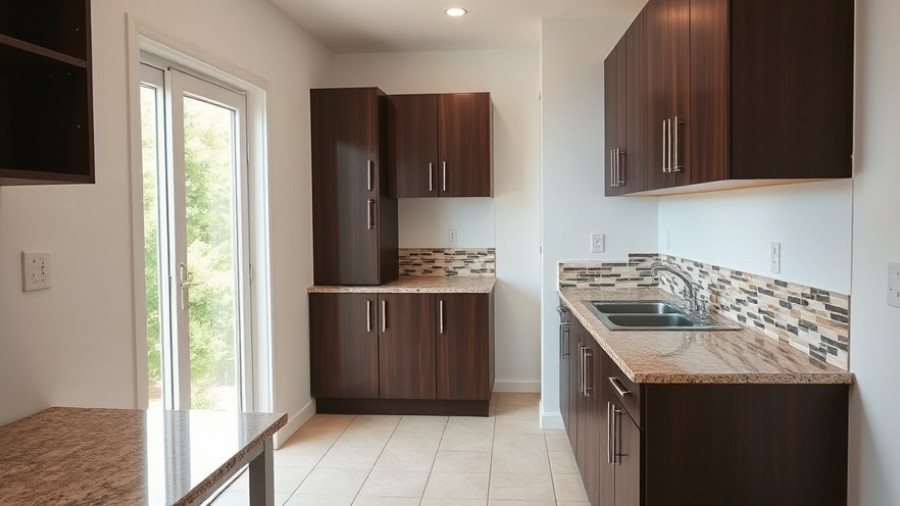
A Season of Inspiration: Celebrating October’s Design Highlights
As October winds down and the last leaves fall, it's time to reflect on the design inspirations and products that defined our experiences during the month. This year has ushered in a blend of innovative ideas and time-honored traditions, creating a vibrant landscape for homeowners and professionals alike. In line with this spirit, we delve into memorable moments from October 2025 in design, inspired by our observations, recent events, and exciting trends.
Echoes of the Past: Drawing Inspiration from Nature
One striking trend observed this month revolves around the emotional connections we form with our surroundings. Many of us found beauty in simple moments—like walks through leafy neighborhoods or stumbling upon charming shops with handcrafted goods. Such experiences remind us that design transcends mere aesthetics; it embodies stories and emotions. The combination of nature and artistry, seen in uses of color and materials, resonates deeply with both residential and commercial spaces.
Consider the use of natural tones like muted greens and earthy browns that echo the seasonal shift. This trend is reminiscent of the evolving palettes explored at major international design events, such as the Seoul Biennale. The biennale sparked essential conversations on how architecture can foster emotional resonance within urban environments, a lesson that homeowners can apply when considering how to design their spaces.
Practical Insights: Items Worth Coveting
As part of our exploration, we can’t ignore specific products that have piqued our interest in October. Among our favorites is the pioneering design from Marimekko, celebrated at the recent MoMA renovation. The fusion of art and functionality mirrored the sentiments around emotional design expressed during the Fall High Point Market. Items that resonate not only in appearance but also in functionality are emerging as a preferred choice among discerning buyers.
Similarly, customizable furniture emerged as a noteworthy theme, driven by a desire for flexibility and personal expression in one’s living environment. This trend reflects the desires of modern homeowners looking for aesthetics that blend seamlessly into their lifestyles. The growth of this market also emphasizes the importance of durability and sustainability, as highlighted in the October highlights that addressed both consumer needs and environmental considerations.
What Lies Ahead: Future Trends in Interior Design
Looking towards 2026, interior design experts are predicting a shift in focus from accent walls to ceilings—ushering in what many now refer to as “the fifth wall.” Wrapping the entire space in color and texture can transform the atmosphere, enhancing intimacy and visual appeal.
This innovative approach holds practical implications, signaling a departure from conventional design principles. Designers are experimenting with full-color washes, decorative elements like wallpaper on ceilings, and molding techniques that create depth and interest. The emphasis on ceilings invites a renewed conversation on how we think about space, supporting a holistic design philosophy that feels both living and intimate.
Engagement in Community: The Role of Local and Global Events
Events like Dubai Design Week and the Brussels Furniture Fair provide vital platforms for designers to source new ideas and engage with changing tastes. Local shops and artisanal boutiques, like Books & Cake in Hillsdale, NY, also offer significant insights into community preferences, combining cultural sentiment with practical design solutions. The intimacy felt in these smaller venues often permeates into broader design dialogues, bridging the gap between local craftsmanship and global trends.
Practical Tips for Homeowners and Contractors
For homeowners and contractors, keeping abreast of these trends and themes helps in making informed decisions that uplift both aesthetics and functionality. Focus on sourcing locally produced materials, incorporating earthy tones, and crafting personal narratives within each space.
Recognizing and avoiding common design pitfalls—like the dreaded “cursed color palette” or neglecting functionality—are key steps in ensuring successful projects. Likewise, embracing the beauty of synergy between nature and innovation can lead to remarkable outcomes in both residential renovations and new builds.
Conclusion: Moving Forward with Insight and Intention
As we wrap up another month filled with inspiration, let’s carry forth these lessons into our future projects. Being mindful of storytelling in design and the emotional weight of our choices ensures that every space reflects its occupants' lives and experiences. Take a moment to reflect on your design journeys this month, and let’s look ahead to the possibilities that await us in 2026.
Stay informed and inspired as we approach an exciting new year in design!
 Add Row
Add Row  Add
Add 




Write A Comment